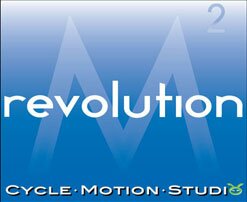Holistic Key Strategies Against Plagiarism
Plagiarism, a term often whispered with a shiver in academic corridors, is more than a transgression; it is a breach of trust, a compromise of one's academic integrity. But what exactly is plagiarism? It goes beyond mere copy-pasting; it is the act of presenting someone else's work as your own, and its implications are far-reaching.
Holistic Strategies Against Plagiarism
Understanding Plagiarism Types
Direct plagiarism, wherein one reproduces someone else's work verbatim, self-plagiarism involving recycling one's own work with outright citation, or mosaic plagiarism, a mishmash of copied content – these are just a few faces of plagiarism. To combat it effectively, students need to understand and recognize the spectrum of plagiarism types.
Developing Research and Citation Skills
Effective study practices are a stronghold against plagiarism. Students need to delve into the art of citing sources effectively, navigating through citation styles like APA and MLA. The importance lies not just in avoiding plagiarism but also in giving credit where it's due – an indispensable part of scholarly communication.
Utilizing Plagiarism Detection Tools
The digital age offers a silver lining in the form of plagiarism detection tools. These tools are not just watchmen against intentional plagiarism; they can also be guides to avoid unintended lapses. Learning how to navigate and use them effectively should be in every student's arsenal.
Time Management and Organization
Procrastination often leads to desperate measures, including plagiarism. Effective time management is a potent strategy against last-minute rushes that may tempt even the most conscientious students. Organizing your time and resources minimizes the probability of succumbing to the pressures of deadlines.
Cultivating Originality in Writing
Originality in writing is not a mythical pleasure; it's a cultivated skill. Encouraging critical thinking and authentic expression can be transformative. By learning techniques that go beyond replication and echo one's unique voice, students can elevate their work to new heights.
Nurturing a Culture of Academic Integrity
Educational Initiatives
Plagiarism awareness programs are not just sessions to pass; they are gateways to understanding the value of original work. Educators should instill in students the importance of their unique contributions to the academic discourse.
Faculty Involvement
Educators play a pivotal role in fostering a plagiarism-free environment. Beyond detecting plagiarism, their role includes guiding students on proper citation and attribution. By nurturing an understanding of academic integrity, faculty members contribute significantly to the fight against plagiarism.
Peer Collaboration and Accountability
Students working collaboratively is a cornerstone of education, but it should go hand-in-hand with personal accountability. Peer review processes can be implemented not just for evaluating the quality of work but also for upholding academic integrity.
In the end, the battle against plagiarism is multifaceted. The holistic strategies provided here, from understanding plagiarism types to cultivating originality and fostering a culture of academic integrity, are interconnected and reinforcing. As we recap these strategies, it is clear that preventing plagiarism is not just a checklist; it is a mindset and a commitment to academic excellence. Let these strategies be your companions on the journey towards an authentic, plagiarism-free academic experience.

